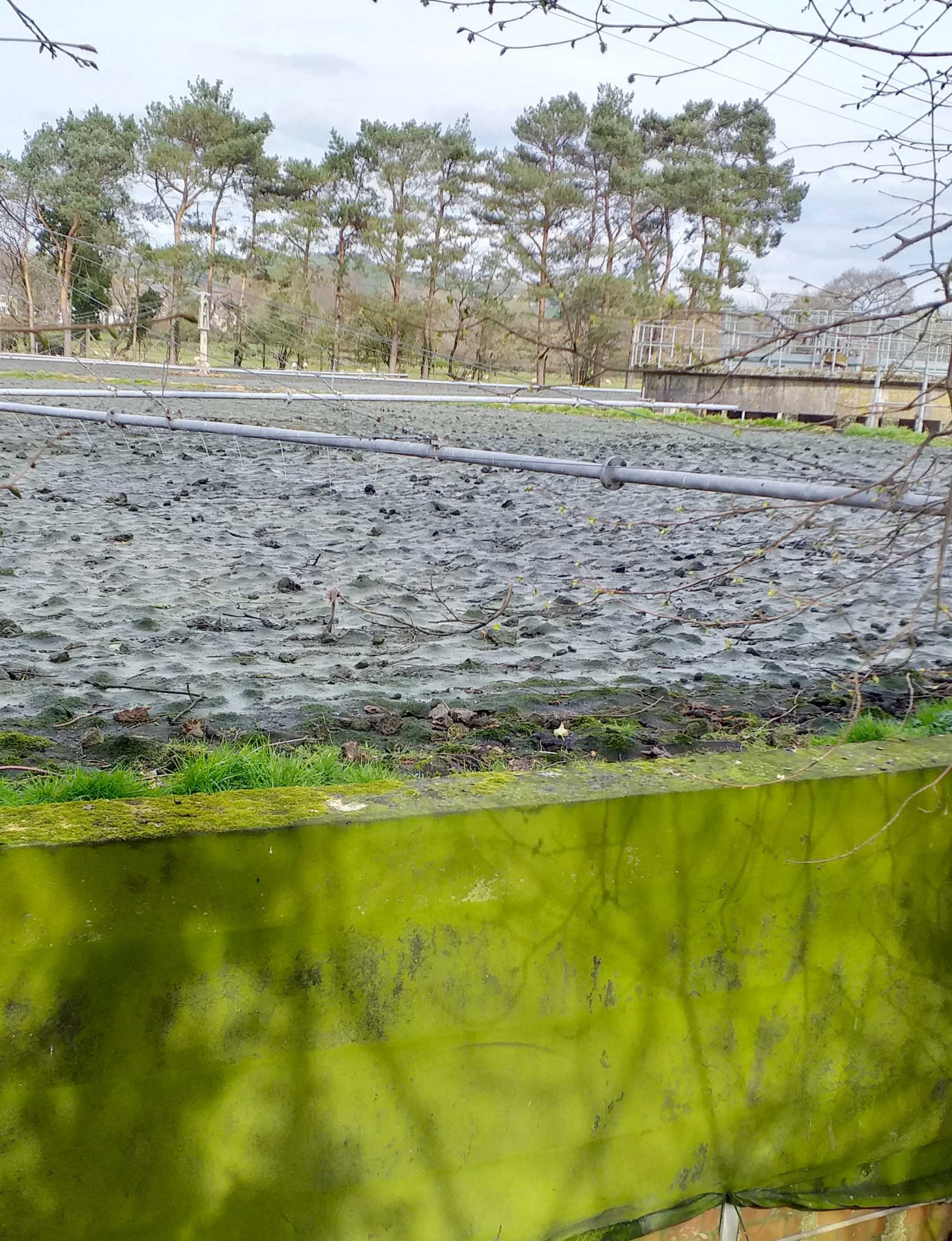
Professor Hammond’s investigation has shown that Cardigan works discharged untreated sewage into the Teifi on no less than 1,146 days between January 2018 and May this year without the works being at full capacity.

Cardigan Bay is home to Europe’s largest population of bottlenose dolphins.

Natural Resources Wales’s complicity in the failures at the Cardigan works (and possibly elsewhere) does nothing to dispel the belief that a lack of enforcement culture is endemic within our environmental regulator.
A new report has revealed extensive and long-term failures by Welsh Water to comply with their operational permit conditions. The report’s author, Professor Peter Hammond, had been advised by Afonydd Cymru to investigate a number of the company’s wastewater works across Wales following concerns over compliance against their discharge permits.
One of these was at Cardigan, which serves over 7,000 people and discharges into the estuary of the SAC-designated Afon Teifi. This famous Welsh river flows into Cardigan Bay, itself SAC-designated and home to Europe’s largest population of bottlenose dolphins.
His investigation has revealed that the Cardigan works discharged on 1,146 days between January 2018 and 31 May 2023, or on 58% of the days in that five year period. On these days, untreated sewage was allowed to enter the Teifi without the works being at full capacity.
Professor Hammond’s report exposes failures relating to ‘full flow to treatment (FFT)’ a term used by the water industry to describe how much wastewater a works must be able to treat at any time. If the amount of wastewater entering the works exceeds FFT, permits allow companies to divert this to storm tanks during heavy rainfall. Diverting sewage before FFT is a failure of conditions of the permit.
It also revealed that the long-term breaches at the site were known about by Natural Resources Wales (NRW), who allowed the discharges to continue for up to ten years without any significant action. Only two enforcement notices were served in that time, with no prosecutions of Welsh Water taken by the environmental regulator for the Cardigan site.
New housing development that was planned to be connected to this works has now ceased and coinciding with the publishing of this report, Welsh Water last week announced that they would be investing £20 million on an entirely new site. While this should prevent any further increases in environmental harm, the problems with the current Cardigan works remain and it is likely that the historical impact of a site that was allowed to fail for so long is significant.
Worryingly, Professor Hammond’s findings also show long-term and repeated breaches of permits at other wastewater treatment works discharging into the Teifi and other rivers across Wales. Afonydd Cymru is now aware that there may be over 100 sites (on SAC and non-SAC rivers) operating in a similar, if not quite as severe, way.
In August this year, Natural Resources Wales issued new guidance to all planning authorities. Once the findings of Professor Hammonds’s report had been confirmed, we immediately challenged that guidance, having already raised concerns with the regulator in April 2023 that it needed to consider the operation of sewer overflows to determine the full impact from new housing.
The discharges at Cardigan breaching permits were known about by Natural Resources Wales for up to ten years, yet no prosecutions have been brought by the environmental regulator.
The latest revelations add to a growing list of failures by Welsh Water over its environmental responsibilities this year. Already under Ofwat investigation for leakage and Per Capita Consumption (PCC) miscalculation, it is also being looked at by the Environment Agency and Ofwat for issues at wastewater treatment works in England, which may expose problems in relation to discharges on the Wye.
While there is clear evidence that Welsh Water tried to resolve the problems at Cardigan, Natural Resources Wales did not adequately address these failures (and possibly others elsewhere) with its light-touch approach to over nearly a decade of environmental harm from the site.
In August, the regulator published its latest “Corporate Plan” and within that stated that one of its three objectives to 2030 was that pollution was minimised in Wales. The Cardigan case does not align with this key objective and does nothing to dispel the belief that a lack of an enforcement culture is endemic within the organisation.
The better news is that with Afonydd Cymru involvement, Professor Hammond and Natural Resources Wales are working on a new regulatory approach for checking water company permit compliance. This could signal a new era of water industry regulation in Wales. Every Welsh Water wastewater site that has had the same issue at Cardigan is being investigated.
Natural Resources Wales complicity in the failures at the Cardigan works (and possibly elsewhere) reinforces the belief that a lack of enforcement culture is endemic within the organisation.
The position going forward with Welsh Water could be more problematic. In addition to the £20 million for Cardigan, substantial amounts of extra investment will also be needed to bring other works into compliance. While Afonydd Cymru supports Welsh Water’s announcements regarding additional funding, we also need to have confidence that the investment is delivering the environmental performance needed. Welsh Water’s current ‘laggard’ position is simply not good enough.
In the meantime, Afonydd Cymru has agreed to refer Professor Hammond’s report to the Interim Environmental Protection Assessor for Wales, whose role is to consider issues on the functioning of environmental law. We believe it is time for a full review of both the regulation and operation of the water industry in Wales.
More Information:
Professor Peter Hammond’s Report, 17 October 2023
Welsh Water statement confirming water price rises: “Welsh Water plans record £3.5bn investment between 2025 – 2030 with a major focus on protecting the environment.” 2nd October 2023
